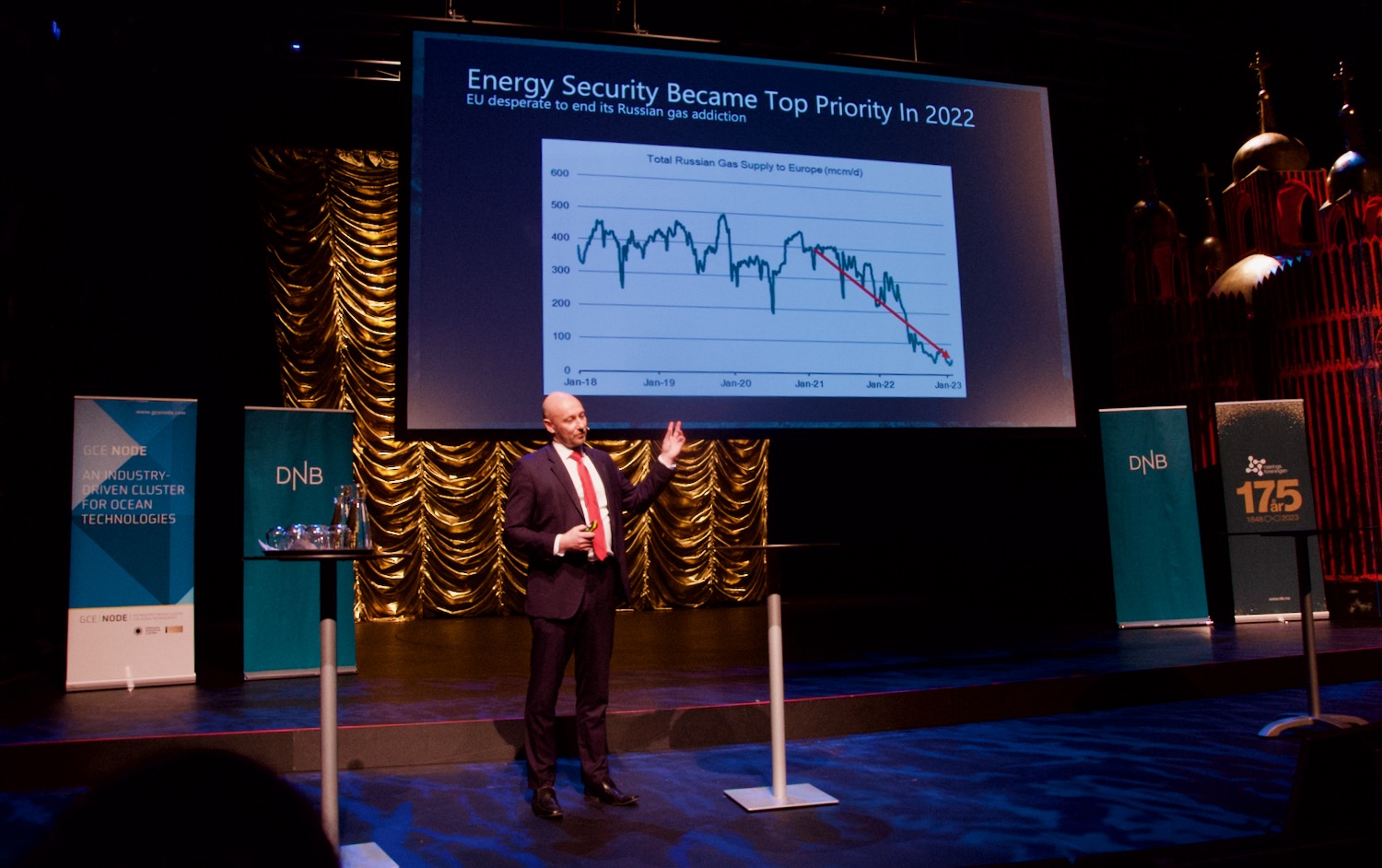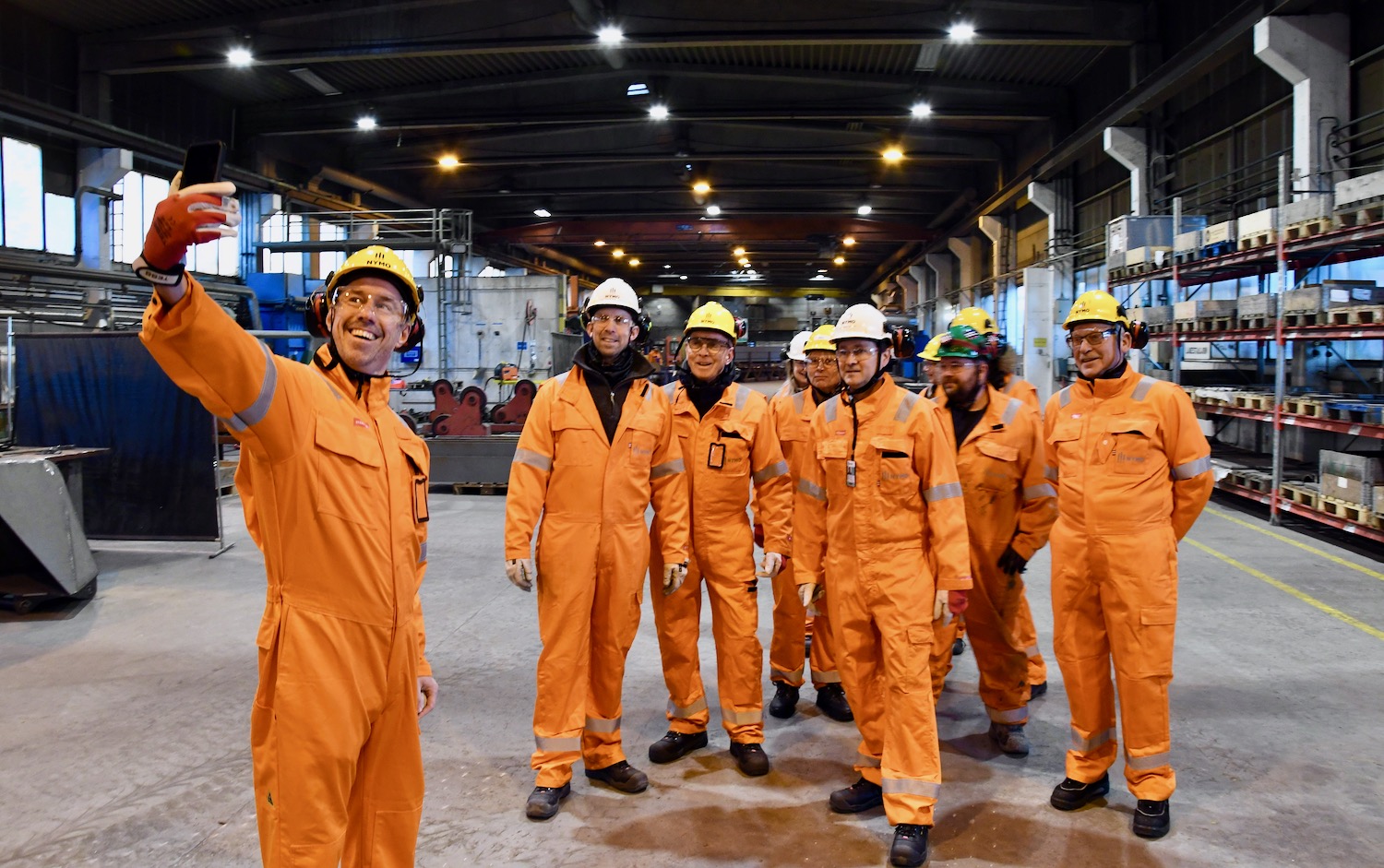Approximately 200 representatives of the business and public sectors gathered for the traditional and annual energy conference in Kristiansand Tuesday. What used to be an oil and gas conference, had diversified to include offshore wind, hydrogen, and energy security as main topics.
“Many consider the energy transition to be a shift from fossil fuels to renewables. I find it to be more complex,” said Helge Andre Martinsen, Senior Energy Analyst at DNB Markets, and a regular speaker at the conference.
PHOTOS: See all photos from Sørlandets energikonferanse
He explained how economic growth fuels energy demand. The relationship between BNP per capital and energy consumption is linear, meaning that energy demand will increase when people have more income.
“Based on a growing world population, especially in developing countries, global demand for energy will increase. The energy transition may be more of an energy addition,” said Martinsen.
Investments in non-fossil energy will have to multiply – quickly – if the world is to reach the 1.5-degree target set in the Paris Agreement.

AN IMPORTANT EUROPEAN ENERGY NATION
Idar Kreuzer, CEO of Finance Norway, stated that Norway is one of the most important European energy nations, based on output from hydropower and oil and gas.
“Within the next 3 to 5 years, important decisions will be made with great implications as to whether Norway will continue to be an important energy player for the next decades. When investments in established industries start to decline in 2027-2029, we must have new plans in place to enter a new phase,” said Kreuzer.
“As a nation, we came together to build the hydropower industry 120 years ago, and again to build a world-leading oil and gas sector 50 years ago. We can do this again,” said Kreuzer.
OFFSHORE WIND
Offshore wind is the most likely new industry to develop and change both the North Sea Basin and the landscape for the Norwegian supplier industry. Holger Grubel, Director Portfolio Development Offshore Wind at EnBW and Arne Eik, Project Director Sørlige Nordsjø II at Equinor presented plans for offshore wind development in their respective companies and consortiums.
«I am still impressed by how the Agder region cooperates on offshore wind. It serves as an example for other regions,” said Eik.
HYDROGEN
The emerging Norwegian market and industry for hydrogen was also on the energy conference agenda. Sigrid Hernes, Senior Economist at Menon Economics, presented a report that describes Norwegian hydrogen as a NOK 1.5 billion industry with 815 jobs and close to NOK 1 billion in exports. Menon has estimated that the hydrogen players’ expectations for 2030 are an industry totaling NOK 83 billion in revenues and 5,800 jobs, as well as NOK 61 billion in exports and revenue abroad.
“This presents great opportunities,” says Tanja Erichsen, Senior Business Development Manager at Greenstat and Project Manager for the Agder H2 Network.







